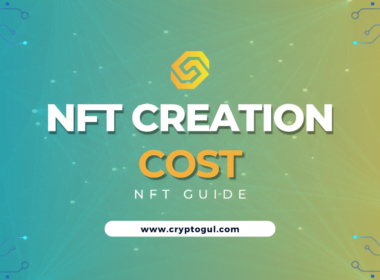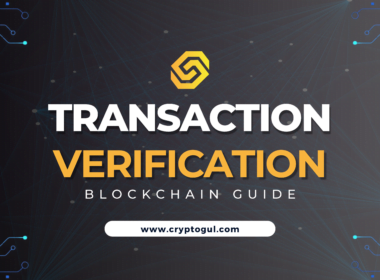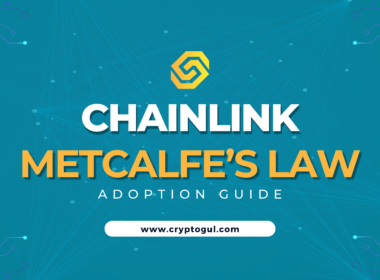Web3, also known as decentralized finance (DeFi), is a new financial system built on blockchain technology. One of the main challenges facing Web3 is scalability.
As more users adopt and transact on the network, the number of transactions that can be processed per second becomes increasingly limited. This is where Layer 2 solutions come in.
Layer 2 solutions are off-chain scaling solutions that allow for faster and cheaper transactions on the blockchain.
They do this by moving some of the computational work off the main blockchain, known as Layer 1, and onto a separate, second layer.
This allows for increased scalability, while still maintaining the security and decentralization of the main blockchain.

Layer 2 Solutions
Layer 2 solutions are off-chain scaling solutions that allow for faster and cheaper transactions on a blockchain network. Two popular Layer 2 solutions are zero-knowledge rollups (ZK rollups) and optimistic rollups (ORs).
Zero-knowledge rollups
ZK rollups use zero-knowledge proofs to validate transactions without revealing the underlying data. This allows for greater privacy and security, as well as smaller transaction sizes and lower gas fees.
Advantages:
- Improved privacy and security
- Smaller transaction sizes and lower gas fees
- High throughput
Disadvantages:
- More complex technology, may be difficult for some developers to implement
- Lack of full decentralization as transactions need to be validated by a ZK rollup operator
Optimistic Rollups
ORs use fraud proofs to validate transactions, which allows for faster and cheaper transactions than on the base layer of a blockchain network.
Advantages:
- Faster and cheaper transactions than on the base layer
- High throughput
- Simplicity in implementation
Disadvantages:
- Lack of full decentralization as transactions need to be validated by a OR operator
- Higher risk of fraud or errors
- Potential for censorship
Both ZK rollups and ORs offer significant improvements in terms of scalability and transaction speed and cost compared to the base layer of a blockchain network.
However, it’s important to note that neither of them, at the present moment in time, are completely decentralized.
ZK rollups, however, offer greater privacy and security. Whilst ORs offer ease of implementation.
The best solution will depend on the specific use case and the trade-offs that are willing to be made.
Limitations and Challenges of Layer 2s
One of the main limitations of Layer 2 solutions is their complexity. These solutions often require users to have a deep understanding of the underlying technology in order to properly use them. This can be a barrier to adoption for many people, especially those who are not technically savvy.
Another limitation of Layer 2 solutions is their lack of interoperability. Currently, different Layer 2 solutions are not compatible with each other, which means that users can only access the benefits of a particular solution if they are using the same network.
This can be a major issue for businesses and other organizations that want to use multiple Layer 2 solutions to meet their needs. This is where bridges across different networks become useful.
Bridges
Bridges help move funds across different networks securely. These are the primary ways that users access different networks and scaling solutions.
Later in the post we will cover a few different layer 2 solutions and provide links to the bridges, so you can explore them yourself.
In addition to these limitations, there are also several challenges that need to be overcome in order for Layer 2 solutions to be widely adopted.
One of the biggest challenges is ensuring the security of these solutions.
Because Layer 2 solutions operate off-chain, it can be difficult to ensure that transactions are properly secured and that users’ assets are protected from fraud or hacking.
Another challenge is the need for better user experience. To be widely adopted, Layer 2 solutions need to be easy to use and accessible to a wide range of users.
Overall, while Layer 2 solutions have the potential to address the scalability limitations of the Ethereum blockchain, there are still several limitations and challenges that need to be overcome before they can be widely adopted.
However, with continued research and development, it looks like these issues are just around the corner from being resolved. Then Layer 2 solutions will become an important part of the web3 ecosystem.
Current Applications
There are multiple scaling solutions that are available to use as of right now. Each with a different approach of tackling the core issue at hand, scaling.
Below you’ll find an overview of each of them, with resources where you can explore them for yourself and try out some of their dApps.
Optimism
Optimism is a Layer 2 scaling solution for the Ethereum blockchain that uses optimistic rollup technology.
It allows for high-speed, low-cost transactions by moving some of the computation and storage off-chain, while still maintaining the security and trustlessness of the Ethereum network.
The major benefits to Optimism include its ability to support a wide range of smart contract functionality and its compatibility with existing Ethereum tools and infrastructure.
However, one drawback is that it is currently centralized. But they are exploring ways to decentralize.
Arbitrum
Arbitrum is a Layer 2 scaling solution that also uses rollup technology, it’s actually based on a fork of Optimism.
So arbitrum offers the same benefits as Optimism, they have just decided to go their own route and lay out a roadmap they think is more suitable to the long term goals.
Benefits of Arbitrum include its ability to support native ETH, which is one of the trump cards it has over Optimism.
One major drawback is that it is still in development and not yet widely adopted, but the TVL on the network is growing at a fast pace.
zkSync
zkSync is a Layer 2 scaling solution that uses zkRollup technology, which utilizes zero-knowledge proofs to secure off-chain transactions.
It allows for high-speed, low-cost transactions by moving some of the computation and storage off-chain, while still maintaining the security and trustlessness of Ethereum.
The primary benefit to zkSync is the privacy preserving transactions. Due to its zero-knowledge design, it puts the users privacy at the core of its long term vision.
Layer 2 scaling solutions are ways to increase the transaction throughput of the Ethereum blockchain by moving some of the computation and storage off-chain.
Optimistic Rollups use optimistic validation to increase the transaction throughput of the Ethereum blockchain while maintaining security and trustlessness.
Zero-knowledge Rollups use zero-knowledge proofs to secure off-chain transactions and increase the transaction throughput of the Ethereum blockchain.
Both Optimistic Rollup and Zero-knowledge Rollup are Layer 2 scaling solutions that increase the transaction throughput of the Ethereum blockchain, but Optimistic Rollup focuses on increasing scalability while Zero-knowledge Rollup also focuses on increasing privacy and security.











